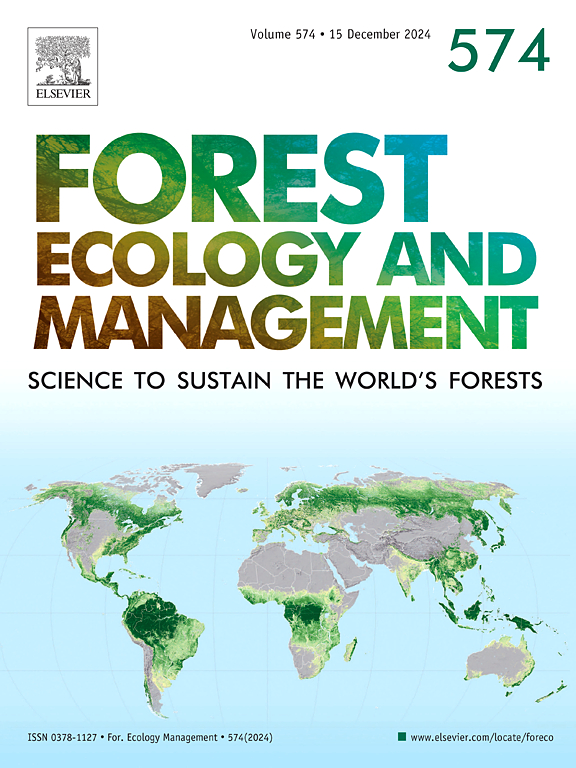Fire refugia under threat: How increasing pyrodiversity reduces species richness in unburned forests
IF 3.7
2区 农林科学
Q1 FORESTRY
引用次数: 0
Abstract
Recent research has emphasized the spatial and temporal variability of fire dynamics, which can enhance landscape heterogeneity by creating a mosaic of forest patches in different successional stages, a concept known as pyrodiversity. This study investigated the influence of pyrodiversity on bird guild species richness and assessed whether forest fire refugia moderate this relationship in fire-sensitive ecosystems. We conducted bird surveys across 15 landscapes in the southeastern Atlantic Forest of Brazil, chosen to represent a gradient of pyrodiversity and fire refugia. Using generalized linear mixed models, we analyzed the relationships between pyrodiversity, fire refugia, and species richness across bird guilds and microhabitats. Our findings revealed that frugivorous and nectarivorous, birds, along with species associated with canopy microhabitats, exhibited a strong negative correlation between pyrodiversity and species richness, particularly in unburned forests. The interaction between pyrodiversity and fire-affected habitats was significant, with species richness in unburned forests declining as pyrodiversity increased. This result highlights the vulnerability of species in unburned areas within highly pyrodiverse landscapes, where frequent fires disrupt ecological stability. There appears to be a threshold beyond which pyrodiversity becomes detrimental. In such landscapes, excessive pyrodiversity can lead to habitat simplification, negatively affecting species that rely on undisturbed vegetation for critical resources. Notably, 21 % of species richness, including threatened and endemic species, was found exclusively in unburned patches, underscoring the critical importance of these areas for biodiversity conservation. Effective conservation efforts must account for historical fire regimes to preserve the biodiversity and ecological integrity of tropical forests.
求助全文
约1分钟内获得全文
求助全文
来源期刊

Forest Ecology and Management
农林科学-林学
CiteScore
7.50
自引率
10.80%
发文量
665
审稿时长
39 days
期刊介绍:
Forest Ecology and Management publishes scientific articles linking forest ecology with forest management, focusing on the application of biological, ecological and social knowledge to the management and conservation of plantations and natural forests. The scope of the journal includes all forest ecosystems of the world.
A peer-review process ensures the quality and international interest of the manuscripts accepted for publication. The journal encourages communication between scientists in disparate fields who share a common interest in ecology and forest management, bridging the gap between research workers and forest managers.
We encourage submission of papers that will have the strongest interest and value to the Journal''s international readership. Some key features of papers with strong interest include:
1. Clear connections between the ecology and management of forests;
2. Novel ideas or approaches to important challenges in forest ecology and management;
3. Studies that address a population of interest beyond the scale of single research sites, Three key points in the design of forest experiments, Forest Ecology and Management 255 (2008) 2022-2023);
4. Review Articles on timely, important topics. Authors are welcome to contact one of the editors to discuss the suitability of a potential review manuscript.
The Journal encourages proposals for special issues examining important areas of forest ecology and management. Potential guest editors should contact any of the Editors to begin discussions about topics, potential papers, and other details.
 求助内容:
求助内容: 应助结果提醒方式:
应助结果提醒方式:


